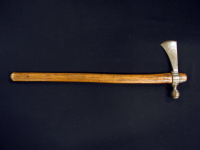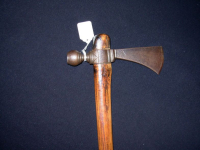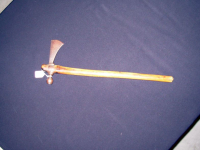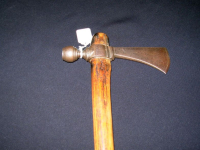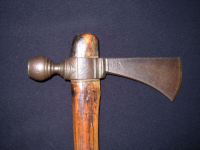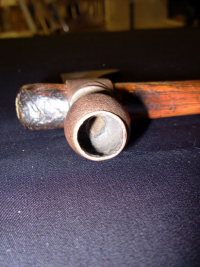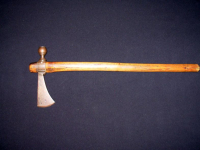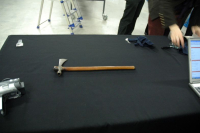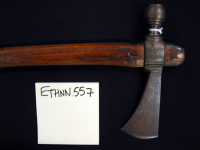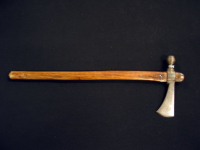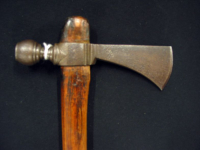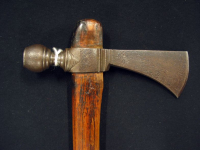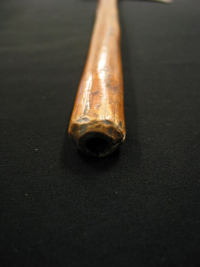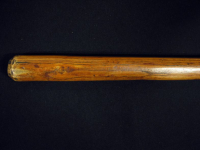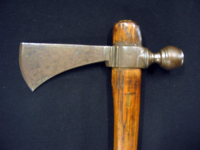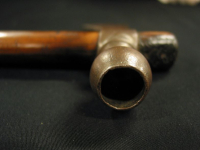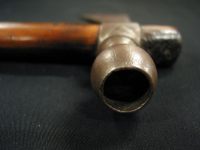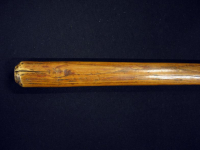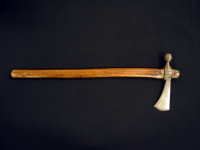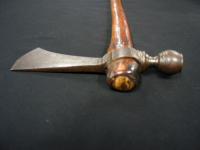ETHNN.557
ETHNN.557
ETHNN.557

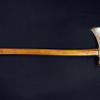

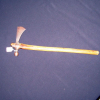
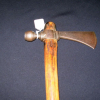
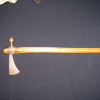
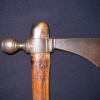
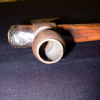
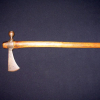
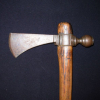


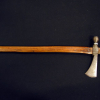
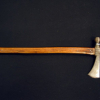
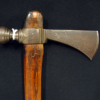

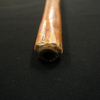
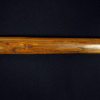
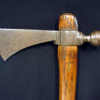
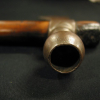
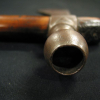
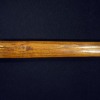
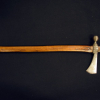

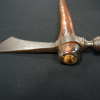

A pipe tomahawk with a cast metal bowl and a wooden stem. A motif incised on the blade's centre top, that looks like a slanted ladder with four bars between two parallel lines, may be a maker's mark or stamp. Late 18th to 19th century. Pipe tomahawks were made by the English or French and distributed to Aboriginal allies.
Based on observations made by the GRASAC research team.
Read More About This Relative
wood, cast metal
The cast bowl and blade are a grey metal, with no incised decoration. Signs of use include the blackening at the end of the pipe and at the mouthpiece, and residue in bowl. The wooden stem is burnt at the pipe/axe end.
There is a mark on the blade's centre top which may be a maker's mark or stamp. It looks like a slanted ladder with four bars between two parallel lines.
According to the McCord Museum, "[t]his type of object was first introduced by French and English traders and administrators in the early 18th century, but became very popular from the last part of the 18th to the first quarter of the 19th century." http://www.musee-mccord.qc.ca/en/collection/artifacts/M2155?Lang=1&acce…
Provenance
McCord Museum, "Pipe Tomahawk" http://www.musee-mccord.qc.ca/en/collection/artifacts/M2155?Lang=1&acce…
About This GRASAC Record
This record was created on 9 April 2007, as part of a GRASAC research visit to Scotland.
On-site researchers: Cory Willmott, Heidi Bohaker, Laura Peers, Ruth Phillips, Keith Jamieson, Alan Corbiere, Alison Brown, Patricia Allen.
 Knowledge Sharing Platform
Knowledge Sharing Platform

